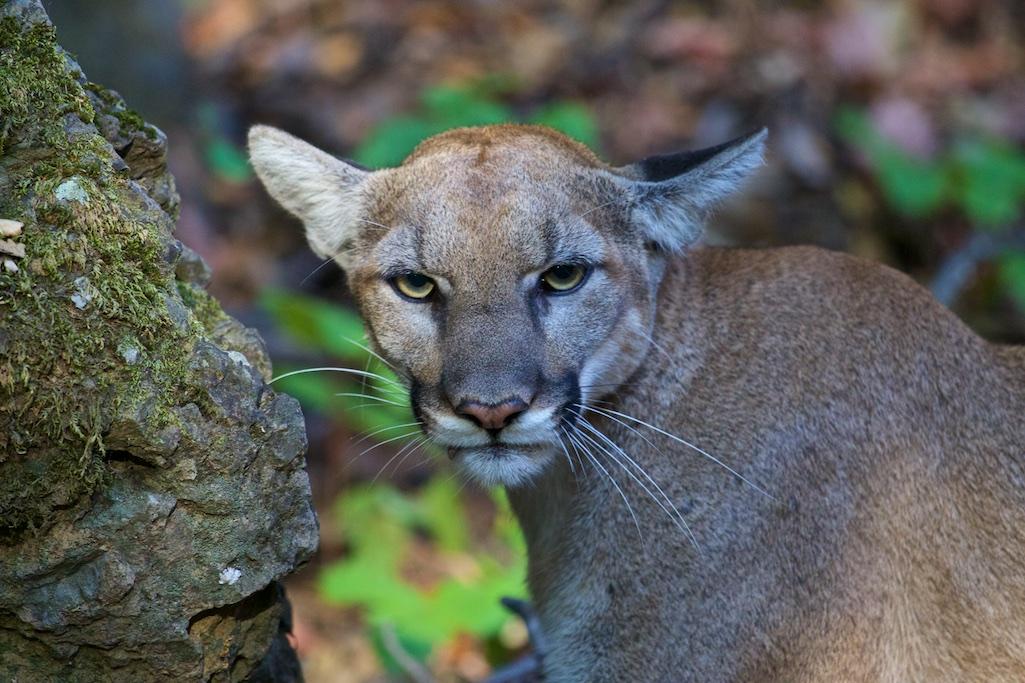
P-42 is a female mountain lion captured in the Santa Monica Mountains and whose locations are in a figure in the published paper/NPS
Editor's note: The following article, with slight alterations, was produced by the staff at Santa Monica Mountains National Recreation Area.
Mountain lions that roam about the Santa Monica Mountains in southern California typically tend to avoid residential areas, preferring instead chaparral and coastal sage scrub areas in and around Los Angeles, according to long-term studies by the National Park Service.
The study found that they rarely enter developments and tend to avoid highly modified, landscaped areas such as golf courses and cemeteries. They also can modify their behavior and persist around humans.
“We found that it is very rare for mountain lions to venture into neighborhoods,” said biologist Jeff Sikich, co-author and the lead field scientist on the project for the Park Service. “Overall, only about 1 percent of locations were actually in urban areas. However, it was interesting to see that in our analysis of habitat selection, mountain lions were consistently closer to urban development than expected by chance. This could be because mule deer, their main prey, may be benefitting from being around people.”
The study, Big Cats in the Big City: Spatial Ecology of Mountain Lions in Greater Los Angeles (Institutional log-in or purchase required), is the featured cover article in the final 2021 issue of the Journal of Wildlife Management. It examines the first 15 years of findings from a nearly two-decade-long study of the ecology and conservation of mountain lions living in and around Santa Monica Mountains National Recreation Area.
Biologists captured and GPS-collared 29 adult and subadult mountain lions in the Santa Monica Mountains, Simi Hills, Santa Susana Mountains, and nearby areas. They used the 128,133 locations to estimate home-range size and evaluate how they used the landscape, including investigating which parts of it they select or avoid.
Shrub vegetation types, especially chaparral, were important in terms of habitat use and resource selection, highlighting their value for conserving the species in southern California and beyond.
“Past studies, elsewhere and even in southern California, have often focused on the importance of forested areas for the species,” said Seth Riley, lead author and wildlife branch chief at the NRA. “While riparian and oak woodlands were also selected, our results show that mountain lions, North America's largest felid, can thrive in shrublands and can persist even in intensely developed southern California.”
Home range sizes were similar to those reported in other areas, with adult male ranges averaging 144 square miles, about three times bigger than those of adult females, at 52 square miles.
There were two very notable exceptions, however. Two adult males resided in isolated habitat fragments – Griffith Park and the Verdugo Mountains. P-41 occupied just 21 square miles in the Verdugos. For more than a decade, P-22 has persisted in the smallest home range ever recorded for an adult male, just nine square miles surrounded by freeways and residential areas in and around Griffith Park.
Along with occupying tiny areas, these two males also ventured into residential areas far more than any other mountain lions. Though even for them, 90 percent of their locations were in natural areas.
“Interestingly, these two males exhibited strong differences in selection relative to time-of-day that appeared to be responses to human activity,” said John Benson, senior author and an assistant professor of Vertebrate Ecology at the University of Nebraska, Lincoln. “When we analyzed selection on an individual basis, we found that these two males altered their behavior towards avoidance of developed and landscaped areas during the day, but towards selection of those areas at night.”
The study notes that understanding how large carnivores use highly altered landscapes is essential for their conservation and management. There are many challenges for the species in Los Angeles, including development, toxicants such as anticoagulant rodenticides, and freeways that divide remaining natural areas. However, their continued existence in the Los Angeles area indicates that sufficient open space remains for this apex predator to still roam the shrub-covered hills in and around the city.
Since 2002, the National Park Service has been studying mountain lions in and around the Santa Monica Mountains to determine how they survive in a fragmented and urbanized environment. The California Department of Fish and Wildlife is responsible for overseeing the management and conservation of mountain lions in the state.


 Support Essential Coverage of Essential Places
Support Essential Coverage of Essential Places







Add comment